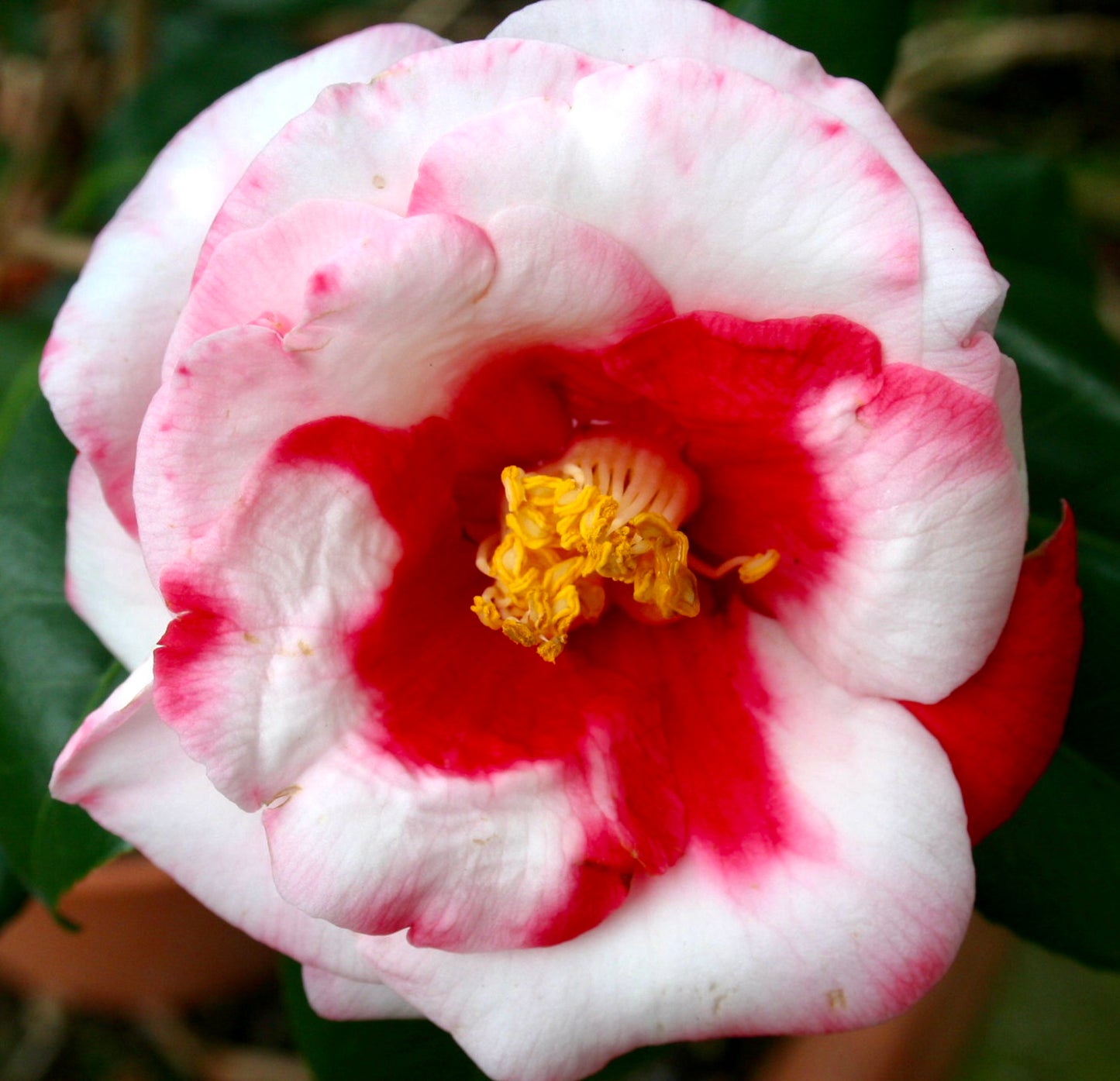Secure Payments
Your security comes first. All our payment methods follow PCI standards and support 3D Secure authentication for safe checkout.

Couldn't load pickup availability
Plant Description
The Camellia japonica cv ADOLPHE AUDUSSON variegated stands out as a captivating member of the Camellia japonica family. This East Asian flowering shrub enchants with its unique variegated leaves, combining deep greens with creamy white patterns. Garden enthusiasts often admire this plant for its elegant blooms and distinctive foliage, which create a striking visual contrast in any landscape. The Japanese camellia is prized for its ornamental beauty and refined charm.
Camellia japonica cv ADOLPHE AUDUSSON produces lush, glossy leaves that enhance its appeal. The variegated camellia offers not only colorful foliage but also delicate, rose-like flowers in soft shades of pink and white. Its medium size fits well in gardens or as a standout specimen plant. The ADOLPHE AUDUSSON camellia blends tradition with uniqueness, making it a favorite among collectors and nature lovers alike.
The variegated Camellia japonica offers a blend of rarity and elegance. This plant brings color and texture to garden designs, appealing to those who seek something beyond ordinary shrubs. With its vibrant foliage and charming blooms, the Japanese camellia cv ADOLPHE AUDUSSON enriches outdoor spaces and indoor collections alike. This variegated camellia is truly a botanical treasure with lasting ornamental value.
IMPORTANT: The pictures show the mother plant, which is not for sale. The offer includes a plant with the dimensions stated in the description.
Botanical family: Theaceae
Botanical genus: Camellia
Botanical species: Camellia japonica
SKU:BA-3102-S-1
Cultivating Camellia japonica successfully requires attention to several key factors, including planting
location, soil preparation, watering, fertilizing, pruning, and pest control. Here are some tips to help you grow healthy and beautiful Camellia japonica plants:
Planting
Location: Choose a partially shaded location for your Camellia japonica. Morning sun with dappled shade in the afternoon is ideal. Protect them fromstrong winds, which can damage their delicate flowers and foliage. Ensure there is good air circulation around the plants to prevent fungal diseases.
Soil Preparation: Camellias prefer well-draining, acidic soil with a pH between 5.5 and 6.5. Amend heavy clay soils with organic matter such as compost or peat moss to improve drainage and soil structure. Avoid planting in areas prone to waterlogging, as excessive moisture can lead to root rot.
Watering: Keep the soil consistently moist but not waterlogged, especially during the growing season and dry periods. Water deeply to encourage deep root growth, but avoid waterlogging the soil. Mulch around the base of the plant to help retain soil
moisture and suppress weeds.
Fertilizing: Fertilize Camellia japonica in spring after flowering and again in late summer to early fall. Use a slow-release, acid-forming fertilizer specifically formulated for camellias orrhododendrons. Avoid fertilizers high in nitrogen, as excessive nitrogen can lead to lush foliage growth at the expense of flowers.
Pruning: Prune Camellia japonica immediately
after flowering to shape the plant and remove dead or diseased branches. Avoid heavy pruning, as camellias
form flower buds on the previous season's growth. Remove any crossing or crowded branches to improve air circulation and prevent disease.
Pest and Disease Control: Keep an eye out for common pests such as aphids, scale insects, and spider mites, and treat them promptly with insecticidal soap or horticultural oil. Monitor for fungal diseases such as camellia leaf spot, powdery mildew, and petal blight, and treat with fungicides as needed. Proper sanitation, such as removing fallen leaves and debris, can help prevent the spread of disease.
Plant Height:
Plant Diameter:
Pot Size: 18 cm
Grafted/Not Grafted:
Disclaimer: Be aware that most plants change across seasons. If present foliage, could have been fallen or change in its color.

Your security comes first. All our payment methods follow PCI standards and support 3D Secure authentication for safe checkout.
Our customer support is available Monday to Saturday from 9:00 AM to 6:00 PM (European time).
Our products travel in professional, eco-friendly packaging made from recycled materials, ensuring safe delivery.
We ship worldwide with full tracking. A Phytosanitary Certificate is provided for all exports outside the EU.
